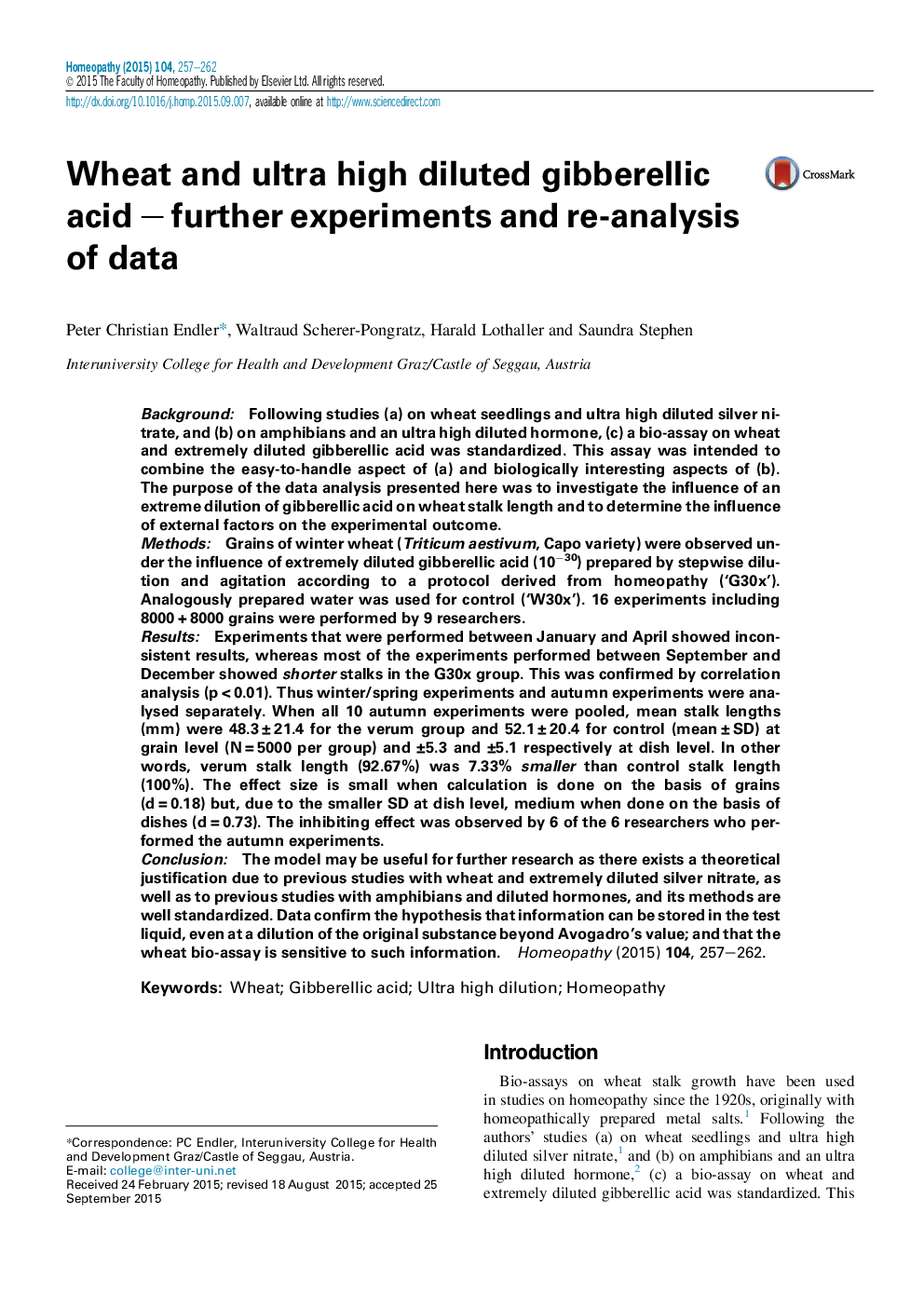| Article ID | Journal | Published Year | Pages | File Type |
|---|---|---|---|---|
| 2629803 | Homeopathy | 2015 | 6 Pages |
BackgroundFollowing studies (a) on wheat seedlings and ultra high diluted silver nitrate, and (b) on amphibians and an ultra high diluted hormone, (c) a bio-assay on wheat and extremely diluted gibberellic acid was standardized. This assay was intended to combine the easy-to-handle aspect of (a) and biologically interesting aspects of (b). The purpose of the data analysis presented here was to investigate the influence of an extreme dilution of gibberellic acid on wheat stalk length and to determine the influence of external factors on the experimental outcome.MethodsGrains of winter wheat (Triticum aestivum, Capo variety) were observed under the influence of extremely diluted gibberellic acid (10−30) prepared by stepwise dilution and agitation according to a protocol derived from homeopathy (‘G30x’). Analogously prepared water was used for control (‘W30x’). 16 experiments including 8000 + 8000 grains were performed by 9 researchers.ResultsExperiments that were performed between January and April showed inconsistent results, whereas most of the experiments performed between September and December showed shorter stalks in the G30x group. This was confirmed by correlation analysis (p < 0.01). Thus winter/spring experiments and autumn experiments were analysed separately. When all 10 autumn experiments were pooled, mean stalk lengths (mm) were 48.3 ± 21.4 for the verum group and 52.1 ± 20.4 for control (mean ± SD) at grain level (N = 5000 per group) and ±5.3 and ±5.1 respectively at dish level. In other words, verum stalk length (92.67%) was 7.33% smaller than control stalk length (100%). The effect size is small when calculation is done on the basis of grains (d = 0.18) but, due to the smaller SD at dish level, medium when done on the basis of dishes (d = 0.73). The inhibiting effect was observed by 6 of the 6 researchers who performed the autumn experiments.ConclusionThe model may be useful for further research as there exists a theoretical justification due to previous studies with wheat and extremely diluted silver nitrate, as well as to previous studies with amphibians and diluted hormones, and its methods are well standardized. Data confirm the hypothesis that information can be stored in the test liquid, even at a dilution of the original substance beyond Avogadro's value; and that the wheat bio-assay is sensitive to such information.
